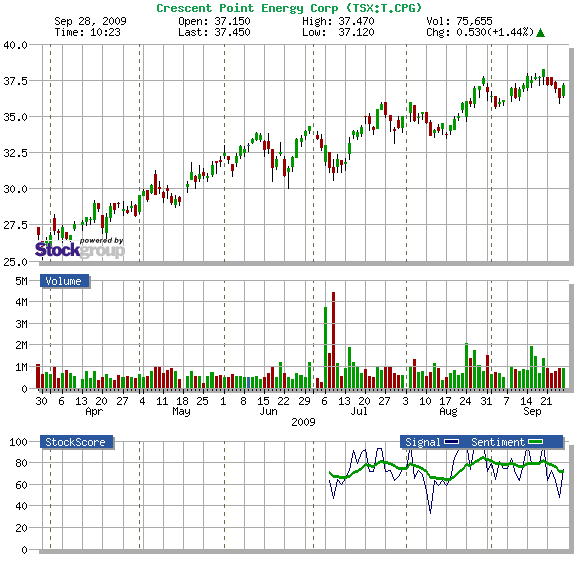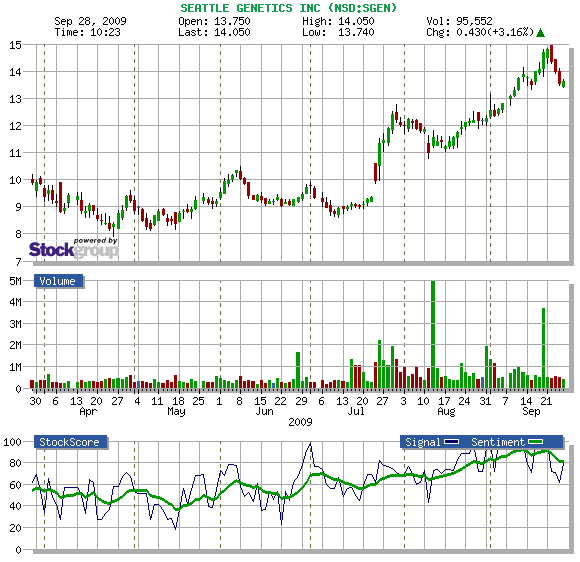
Ed Note: Tyler Bollhorn will be speaking at the:
The Money Talks All Star Trading Super Summit
Saturday, October 24, 2009 -The Sheraton Vancouver Wall Centre
Click HERE for the Speaker Lineup and to REGISTER if you want to take advantage of this Event.
Developing a Trading Strategy
Stockscores.com Perspectives for the week ending Sept. 25, 2009
![]()
Most traders start trading the stock market without much of a plan. They get a tip from a friend, perhaps read an article or watch a stock report on TV and decide to make that first trade. If the market is doing well they can get lucky and make a profit. Some virgin traders might even go a number of months trading profitably, convinced that they know what they are doing.
After 20 years of trading and training thousands on how to trade I can tell you that a person who trades without a well thought out plan will eventually lose. Their stock market profits are just short term loans which, as long as the trader continues in the game, eventually get repaid.
My first stock trade was motivated by a tip from a friend; I lost money. Despite the pain of losing I was captivated by the stock market and the notion that I could make money without having to work. Foolish thoughts to be sure, for making money in the stock market is certainly work, but that was something I would come to realize later.
- Get the StockSchool Pro Free

- DisnatDirect named the number one Canadian brokerage for Traders by Surviscor! Open and Fund a brokerage account with DisnatDirect and receive the StockSchool Pro home study course free, including special Pro level access through the DisnatDirect client website. Offer only available to Canadian residents. For information, click here
After a few years of stock market loans and repayments I realized that I was not getting any closer to my dream of making a living from the stock market. I decided I needed a plan and at the core of the plan would be a trading strategy.
It seemed obvious to me that if I was going to get good at picking winning stocks I should look at how winning stocks behaved early in their trends. I downloaded chart data for every stock that I could and manually went through those charts one at a time in search of the important trends that I wanted to be able to predict. I filled large binders with chart printouts, marked up with pencil identification of patterns that I found repeated over time.
Through this process I created a list of trading rules which I tested and retested. Satisfied that my rules worked I started to trade them. I did not have an abundance of capital when I began which is good since it meant that my mistakes did not cost me a lot. However, the process of applying my trading rules was informative and it led to modifications to my strategy. With time, success came and I started to pull money out of the market consistently. In one three month period I earned better than a 1500% return.
This sounds great, and it is a fun process. However, while it is simple it is not easy. There are a number of components that are needed to form a trading strategy and ultimately, the trading plan.
First, you need to have an idea. This should be the relatively simple foundation of the strategy, the source of the opportunity. Many of my trading strategies revolve around the idea that abnormal market activity is a clue to future price trends. I use this idea in different ways and I have a number of different strategies based on this same idea.
From the idea comes the rule development phase. First, what are the criteria for entry? These should be as simple and concise as possible for you need to be able to apply the rules over and over again without a lot of room for bias in how they are applied.
Most aspiring traders focus on the trade entry and forget to consider risk management and the entry point. Trust me when I say that the entry decision is the easy part; having good risk management and a set of rules for maximizing profit and minimizing loss is more important.
Traders don’t get to play if they lose all their capital. Capital preservation is absolutely essential and should be the focus for all traders. Taking big losses or tying up your cash in stocks that are going no where is how traders become long term investors.
For every trade you should know and be comfortable with the risk. You should have a set of rules to determine when the trade is a bust and you need to hit the eject button. I have never met a trader that was always right and so we all need to have a plan for what to do when we are wrong.
Our emotions get most involved in the exit decision. It is normal to worry about whether we are selling too early, that there may be more upside that we might miss out on if we sell. Of course, we also worry about the loss of profit, watching a winner turn in to a loser. Overcoming these emotions requires well tested rules for the best time to exit. The rules should maximize profitability over a large number of trades rather than trying to extract the most out of every trade. Trying to sell stocks at their tops is an expensive way to trade since it rarely happens. Be happy with getting most of the profit along the way but always be willing to leave a little on the table.
The process of developing a trading strategy can take months but as you gain more experience it should be far less time consuming. I developed a new trading strategy this past week over a couple of days and had fun doing it.
Be aware that a trading strategy should always evolve as market conditions change. That very first strategy that I developed years ago is something that I still use but I have constantly tweaked the rules over time to make sure it kept up with the changing market.
So, before you make another trade, make sure you have a plan. Write down your rules, test them to prove to yourself that they will make profits and then put money to work.
![]()
Every trader should have a few different strategies available to them for different market conditions. For the past number of weeks I have good success looking for abnormal breakouts from good chart patterns. However, since the market spent most of this past week pulling back from its highs, I think it is time to change it up a bit.
When I see a market with upward momentum pulling back I look for opportunities to play the pull back. Often, stocks will come back to their upward trend line and bounce off of it, resuming the longer term upward trend. I call this strategy a Pull Back Play, it is a swing trading strategy (with an expected hold period of less than two weeks) taught in the StockSchool Pro course.
I ran this Stockscores Market Scan this weekend and found a few set ups. I think we may still be a couple of days early since the major market indexes have not yet shown the signs of a bounce off of a trend line but I do expect it will happen soon. I suggest monitoring the market closely for the kind of set ups that you see in the stock featured below and continue to apply this strategy in the near term as the market is likely to bounce back from its recent weakness.
![]()
1. T.CPG
T.CPG has been in a very strong and orderly upward trend but has been pulling back from its high for the previous four days. On Friday it showed some new strength as it bounced off of the upward trend line. Support at $35.85.

2. SGEN
The trend on SGEN got a little bit too steep up until this week but that was corrected by three days of selling pressure. This brought the stock back to its upward trend line and with the close above the open on Friday I think it can bounce back and continue higher in the short term. If the stock closes below support at $13.40 then this swing set up is a bust.

Tyler Bollhorn started trading the stock market with $3,000 in capital, some borrowed from his credit card, when he was just 19 years old. As he worked through the Business program at the University of Calgary, he constantly followed the market and traded stocks. Upon graduation, he could not shake his addiction to the market, and so he continued to trade and study the market by day, while working as a DJ at night. From his 600 square foot basement suite that he shared with his brother, Mr. Bollhorn pursued his dream of making his living buying and selling stocks.
Slowly, he began to learn how the market works, and more importantly, how to consistently make money from it. He realized that the stock market is not fair, and that a small group of people make most of the money while the general public suffers. Eventually, he found some of the key ingredients to success, and turned $30,000 in to half a million dollars in only 3 months. His career as a stock trader had finally flourished.
Much of Mr Bollhorn’s work was pioneering, so he had to create his own tools to identify opportunities. With a vision of making the research process simpler and more effective, he created the Stockscores Approach to trading, and partnered with Stockgroup in the creation of the Stockscores.com web site. He found that he enjoyed teaching others how the market works almost as much as trading it, and he has since taught hundreds of traders how to apply the Stockscores Approach to the market.
References
Get the Stockscore on any of over 20,000 North American stocks.
Background on the theories used by Stockscores.
Strategies that can help you find new opportunities.
Scan the market using extensive filter criteria.
Build a portfolio of stocks and view a slide show of their charts.
See which sectors are leading the market, and their components.
Disclaimer
This is not an investment advisory, and should not be used to make investment decisions. Information in Stockscores Perspectives is often opinionated and should be considered for information purposes only. No stock exchange anywhere has approved or disapproved of the information contained herein. There is no express or implied solicitation to buy or sell securities. The writers and editors of Perspectives may have positions in the stocks discussed above and may trade in the stocks mentioned. Don’t consider buying or selling any stock without conducting your own due diligence.

